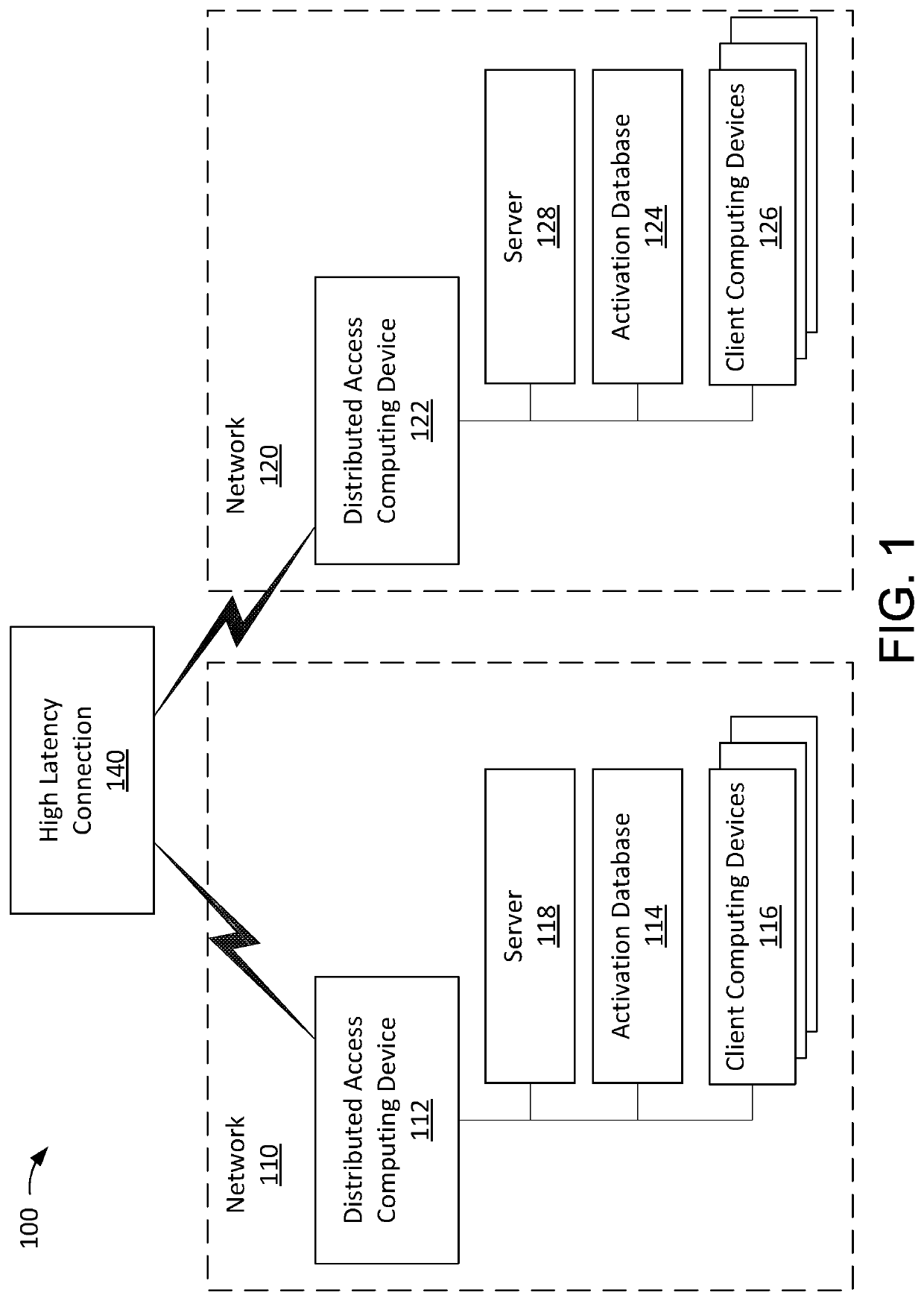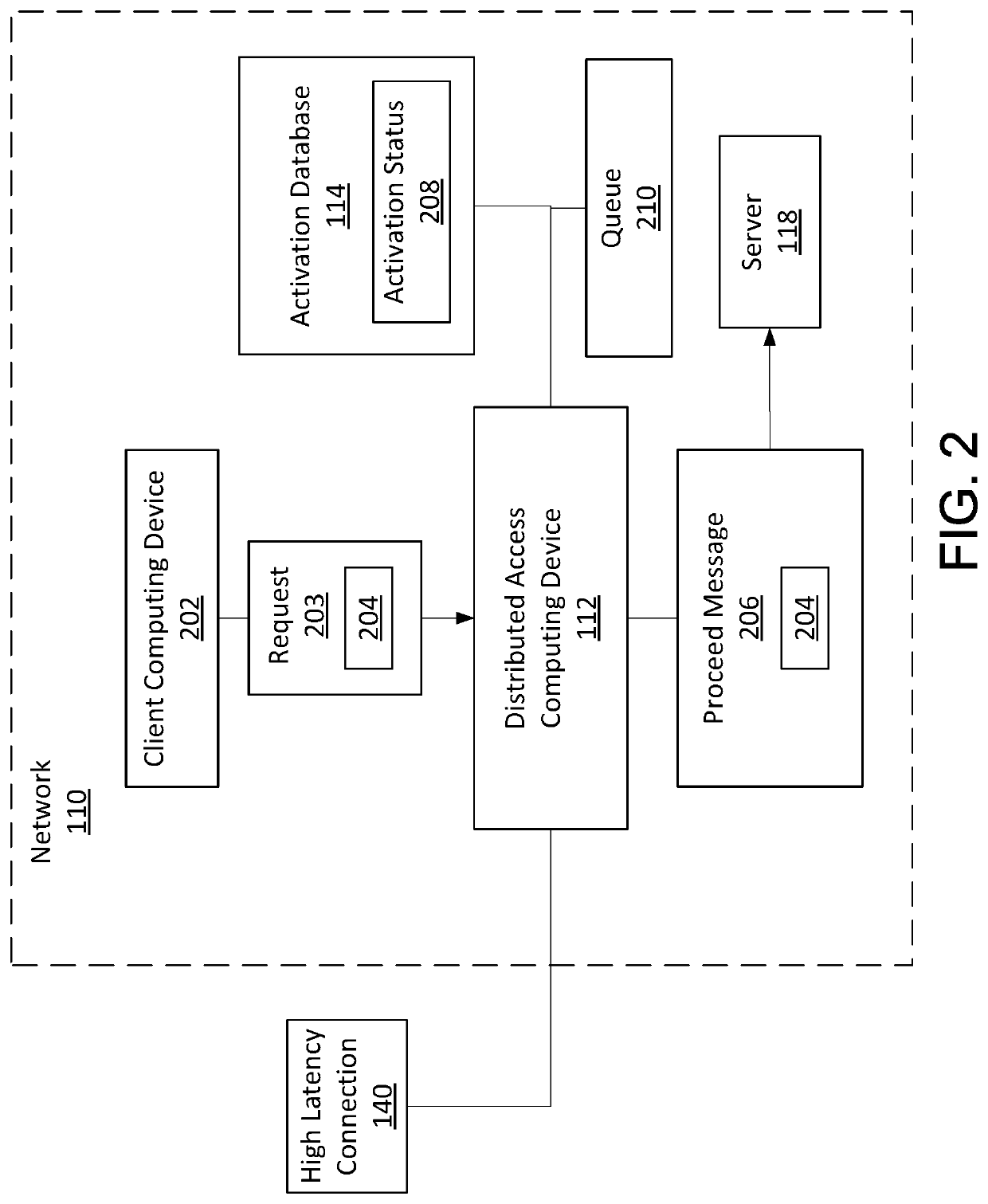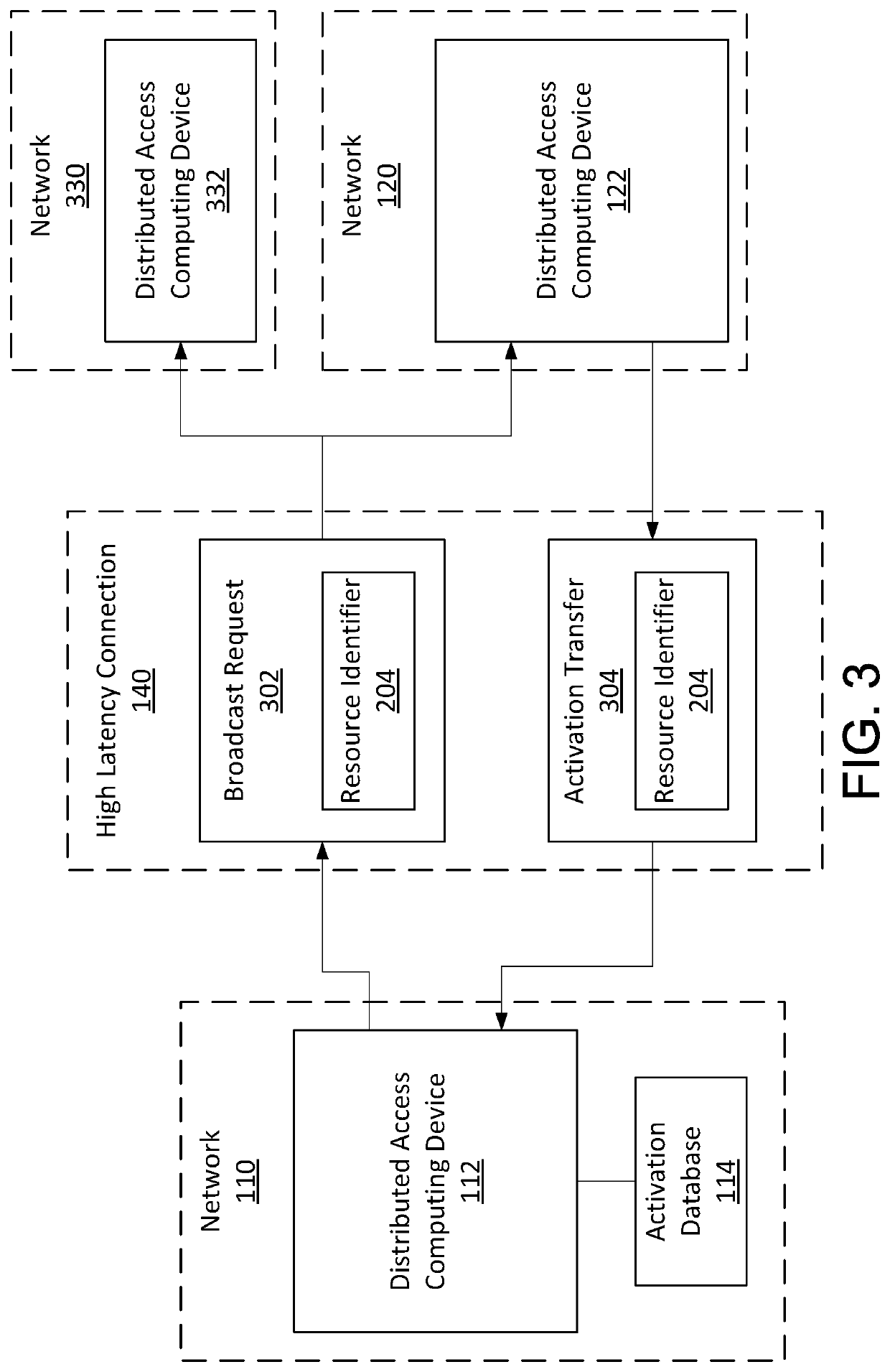Controlling access to data resources on high latency networks
- Summary
- Abstract
- Description
- Claims
- Application Information
AI Technical Summary
Benefits of technology
Problems solved by technology
Method used
Image
Examples
first embodiment
[0105]At least two embodiments are described herein for addressing the ordering problem. However, this disclosure is not intended to be limited by the descriptions of these embodiments. In a first embodiment, DACD 112 includes schedule module 910. DACDs 122 and 902 may further include a schedule module. Schedule module 910 is configured to sequentially activate DACDs (e.g., DACD 112) for multiple resource identifiers. In other words, schedule module 910 may cause activation status for multiple resource identifiers to ‘rotate’ between all DACDs, using a predefined schedule. For example, schedule module 910 may sequentially activate each DACD for ten minutes every 24 hours. Each DACD may be activated for between one minute and one hour, and the sequential process may happen every hour to every 24 hours. Thus, each DACD becomes activated for all (or at least a portion of) resource identifiers on a rolling basis. The predefined schedule ensures at most one DACD is activated at a time, r...
second embodiment
[0106]In a second embodiment, broadcast request messages may further include priority or ordering data, and DACDs may include a timing module and an ordering module (e.g., DACD 112 include timing module 912 and an ordering module 908). In this embodiment, a DACD waits to act on a received broadcast message, such that multiple broadcast requests may be received. The DACD then decides which of the received broadcast requests to respond to based, at least in part, on the ordering data.
[0107]DACD 112 receives broadcast request 914 from DACD 122. DACD 112, including timing module 912, may wait for a delay period after receiving broadcast request 914. The delay period, in the example embodiment, is the largest known network latency time of each external DACD relative to DACD 112. Timing module 912 may store the network latency for each external DACD relative to DACD 112. DACD 112 receives broadcast request 906 from DACD 902 during the delay period. Thus, DACD 112 has received two broadcas...
PUM
 Login to View More
Login to View More Abstract
Description
Claims
Application Information
 Login to View More
Login to View More - R&D
- Intellectual Property
- Life Sciences
- Materials
- Tech Scout
- Unparalleled Data Quality
- Higher Quality Content
- 60% Fewer Hallucinations
Browse by: Latest US Patents, China's latest patents, Technical Efficacy Thesaurus, Application Domain, Technology Topic, Popular Technical Reports.
© 2025 PatSnap. All rights reserved.Legal|Privacy policy|Modern Slavery Act Transparency Statement|Sitemap|About US| Contact US: help@patsnap.com



